Creature feature: digging up nature-based solutions from creepy, crawly critters
September 12, 2023
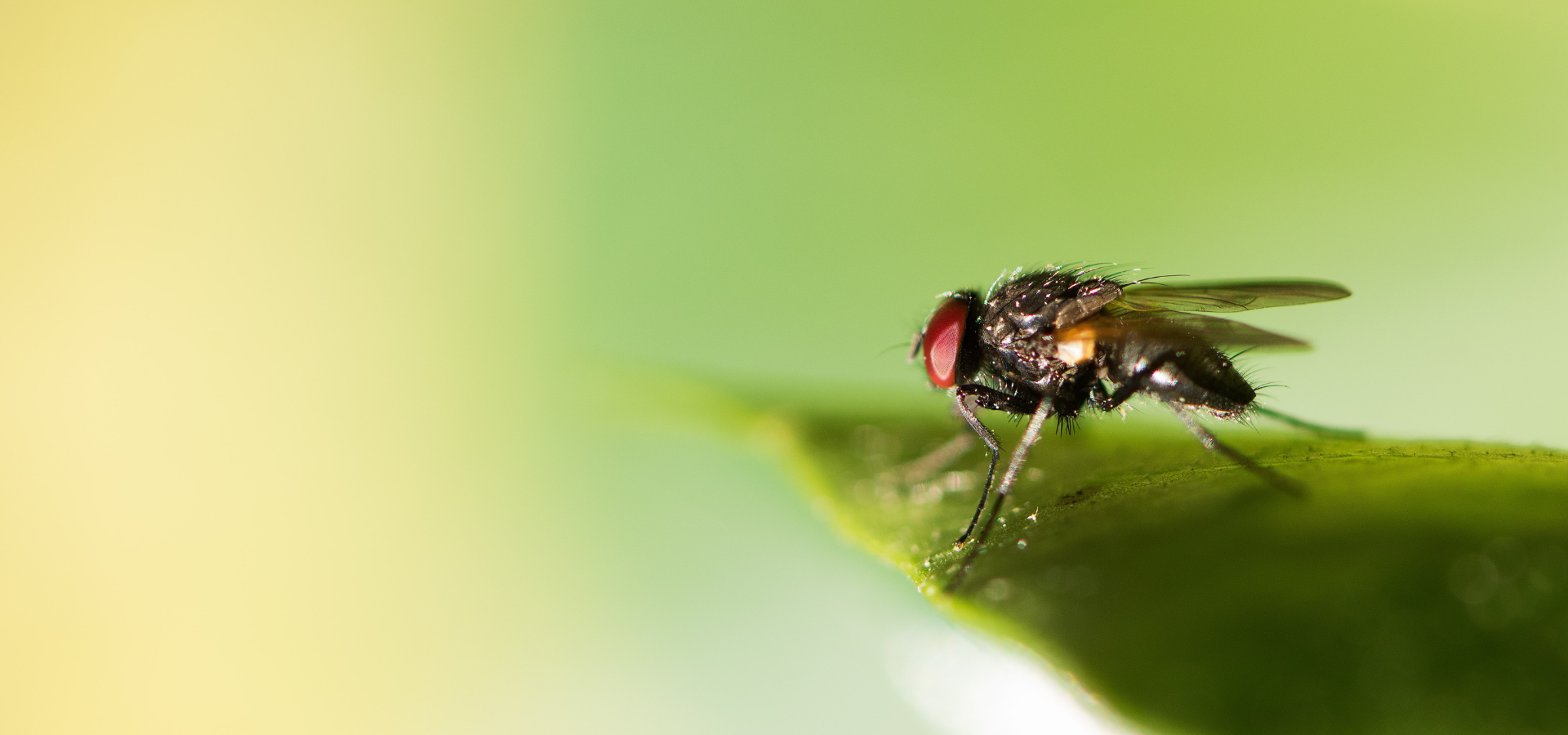
Even our smallest innovator can bring about big things.
We like bugs.
In fact, the UNDP Accelerator Labs are learning that bugs hold solutions to some of the more challenging local problems that communities face. If we were to learn from these tiny critters and the innovations derived from them, they could have the potential to address multiple development challenges on a global scale such as food waste, food insecurity or plastic pollution. The Labs are taking a microscopic look at the macroscopic potential by locating, mapping and amplifying insect-based innovations and learning from grassroots innovators, farmers and entrepreneurs.
We want to understand what we can do as a Network to learn from these creepy, crawly innovations. Take waste, for instance. We are aware that the world is choking in plastic. What if, for example, we could use a moth to eliminate polyethylene plastic waste in a sustainable way? And what if we could use a fly to turn bio-waste, such as compost from farms, into protein that could be used to feed livestock? What if we could supplement the diets of millions of people, reducing food insecurity and recovering natural ecosystems at the same time?
On the one hand, some of these innovations exhibit biomimicry: modeling designs and materials on things found in nature for sustainability problems. But we are also seeing solutions that don’t just imitate nature, they are already in nature.
Grab your magnifier and let’s have a look.
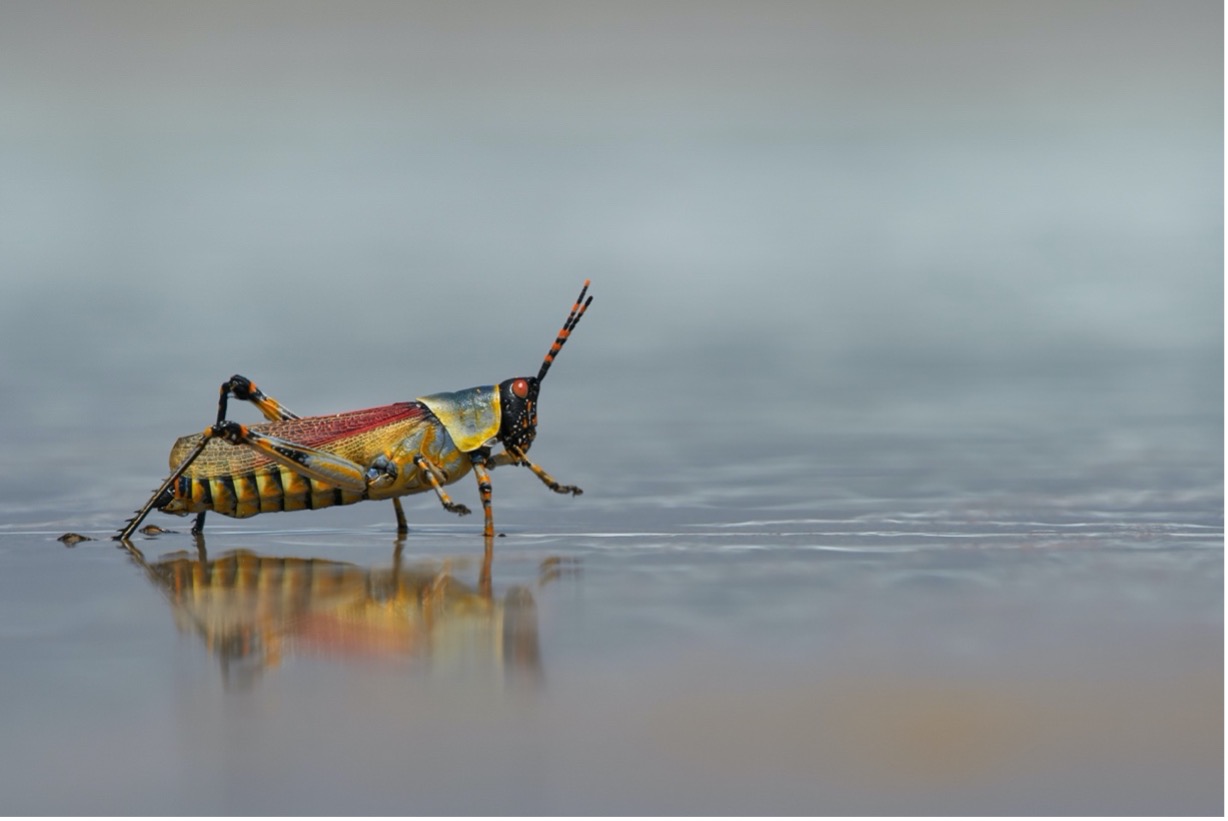
The tsie-balimo, or elegant grasshopper, is a pretty pest.
Turning a negative into a positive: problem-solving in pest control
In Lesotho, experimentation with an insect-based solution was used to answer questions about whether a seemingly simple and natural way to curb insect infestations on farmers’ crops was as good as it sounded. The UNDP Lesotho Accelerator Lab came across Motseki Ratefane, a farmer in the Kolo area in the Mafeteng district who was using a powdered pesticide on his maize crops. He created it by crushing tsie-balimo – “elegant grasshoppers” -- which were feeding on his crops and destroying them. The farmer discovered that, when crushed, the bad smell of the elegant grasshopper repels other insects.
Grasshoppers and farmers are usually enemies. Grasshoppers swarm across countries and breed rapidly. The damage they inflict hinders the regrowth of crops, affecting the livelihoods of farmers. However, questions arose when the surprising news of this nature-based pesticide was circulated. Does the elegant grasshopper contain anything that would be harmful to crops and soil texture? Is it detrimental to the environment and the ecosystem to eliminate grasshoppers and other pests in this way? Does this solution outweigh the risks and harms of commercial pesticides? And how can we prove its efficacy and safety?
In collaboration with the farmer and the National University of Lesotho, the Lab set up laboratory experiments to validate the scientific merit of the farmer’s practice. They tested elegant grasshopper extracts on black bean aphids, following the process used by the farmer. “The findings revealed that elegant grasshoppers do have chemical compounds, giving them pesticidal-like characteristics,” reported Neo Matsoso, UNDP Lesotho Accelerator Lab Head of Exploration, in the blog I am an Elegant Grasshopper: I am a farmer’s friend!“The elegant grasshopper extract concentrations exerted a 100 percent mortality rate in 24 hours when sprayed on black aphids. This grasshopper solution has far exceeded the speed and performance of the commercially found pesticides.”
Further results indicate that the grasshopper solution is safe for human consumption and the environment, unlike chemical pesticides, which remain in the environment and pose some health risks. The next challenge is the elegant grasshopper’s inconsistent abundance in the wild. Further experimentation is planned by the Lab with several new questions in mind, for example, outside of infestations, does harvesting the elegant grasshopper create an imbalance in nature?
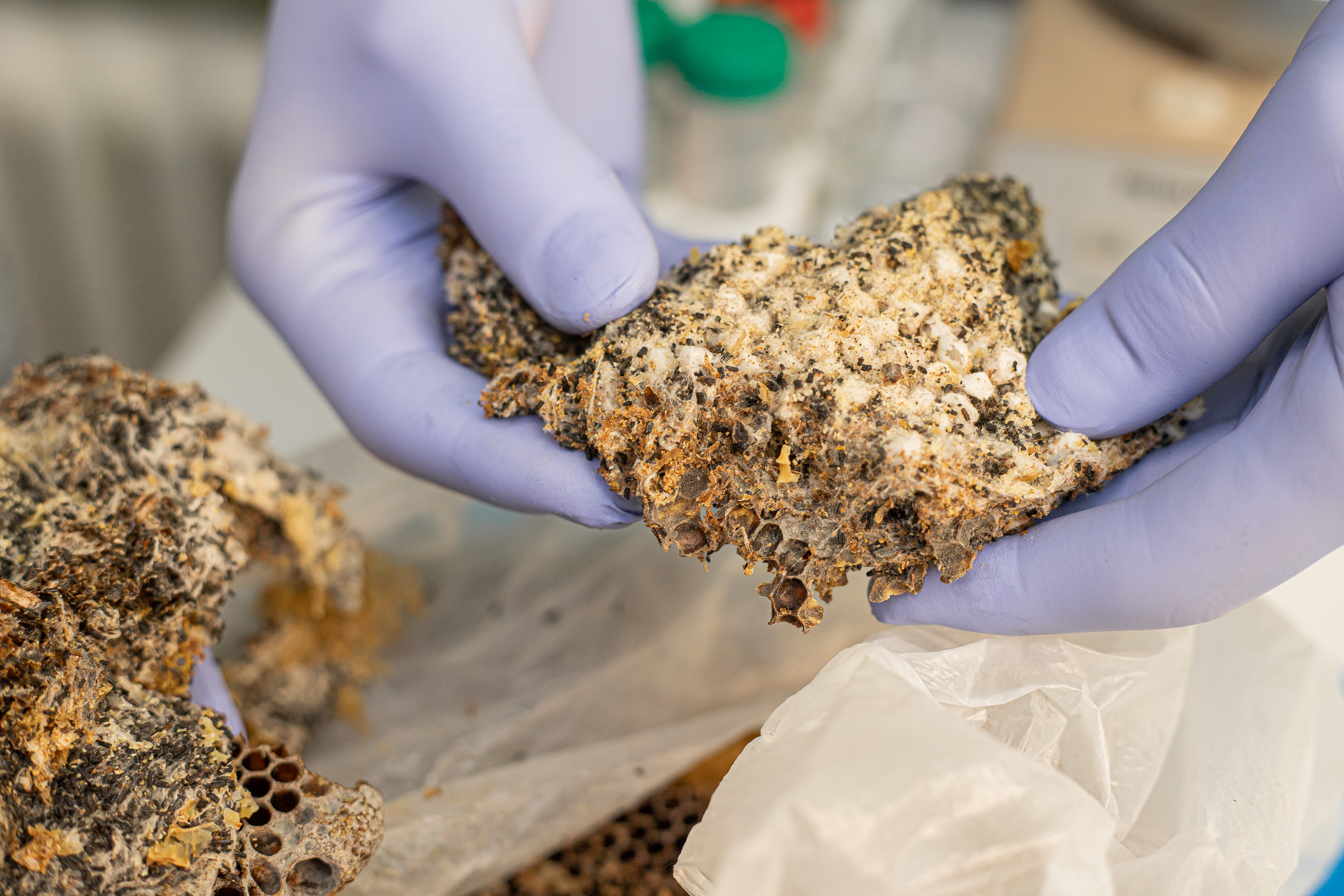
Wax moth larvae harvesting in the Project MOL laboratory in Ukraine.
Solving a big global problem — plastic waste — with tiny wax moth larvae
In 2019, when Dr. Lyubomyr Matsekh saw what happened when larvae from the greater wax moth (Galleria mellonella) was kept in a polyurethane plastic bag, something clicked. The larvae had eaten through it completely and the plastic bag had all but disappeared. This was the start of an innovation that became “Project MOL Eats My Plastic,” which offers the safe disposal of polyethylene plastic with the help of wax moth larvae. The innovation was a winner of the National Biomimicry Competition, organized by the UNDP Ukraine Accelerator Lab and The Biomimicry Institute (USA). With support from the Lab, the project went on to the international Biomimicry Global Design Challenge and was named one of 12 finalists.
Project MOL is testing applications for the larvae to feed on polyethylene waste and produce organic matter that has commercial value. Polyethylene is the most common type of consumer plastic and is not biodegradable. Products such as clear food wrap, shopping bags and detergent bottles are made of polyethylene. The way the wax moth larvae operates is a complex science puzzle, but the innovation brings the larvae to digest the plastic waste in special containers, with no additional energy or chemical resources, while breaking it down into organic matter. That matter is ethylene glycol, which is used in agriculture as fertilizer in addition to other industrial uses. By creating a commercial product from waste, this solution has its appeal as a means of plastic waste elimination. (While Project MOL’s operations are currently halted due to the ongoing war in Ukraine, they plan to resume their work as soon as possible.)
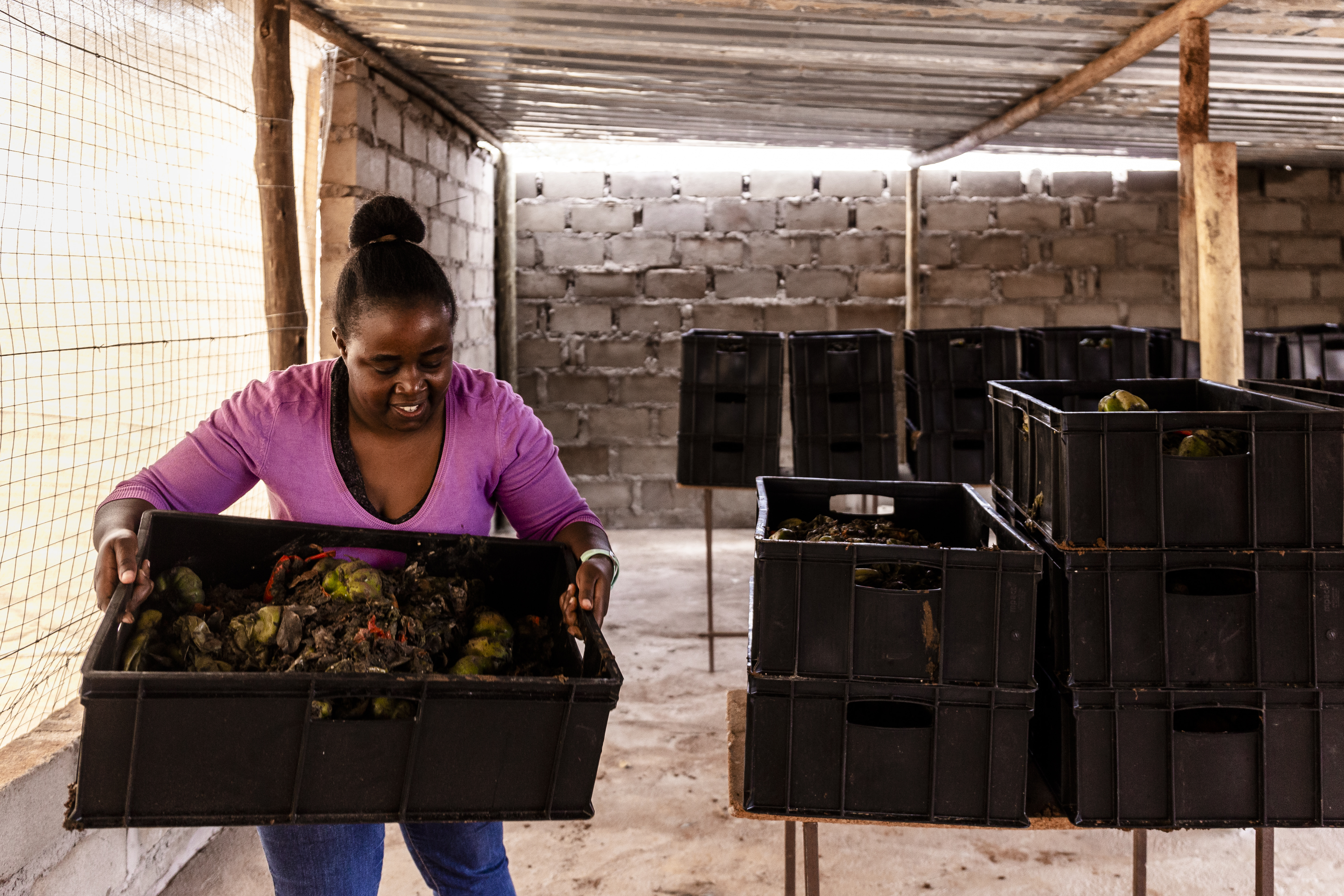
Nomuntu Ndhlovu sources compost for her black soldier fly breeding system in South Africa.
Giving black soldier flies their marching orders
Nomuntu Ndhlovu, Director of UNTUM Solutions South Africa, is a passionate entrepreneur who is breeding black solider flies as a catalyst to speed up the composting of food waste. She is one of the winners of the Food Waste Innovation Challenge created in partnership between UNDP South Africa Accelerator Lab and the Branson Centre of Entrepreneurship in South Africa, and spoke about her passion during a UNDP Accelerator Lab Twitter Spaces session on food security.
How does the black soldier fly (H. illucens) help reduce waste? Composting organic waste normally takes about six months to complete, but it can happen much faster with the black soldier fly. The fly speeds up the process to less than two weeks! First, black soldier flies are grown and allowed to reproduce. Once their eggs hatch, the larvae start consuming organic waste and then they are harvested and sold as a clean source of protein for livestock. Organic manure produced from the waste is also sold as a product. UNTUM Solutions has set a goal to be able to process 360 tons of food waste annually with this system.
The Labs are seeing patterns with black soldier flies in other regions as well. The UNDP Togo Accelerator Lab supports an experimentation with the black soldier fly. They set up a production and marketing unit to make fly maggot flour as an alternative to the use of fish meal in livestock feed. Dried black soldier fly maggots are rich in protein, amino acids and fatty acids. This innovation means healthier stock for the farmers at a lower cost. The Lab’s experimental work led to the installation of two black soldier fly units in the UNDP Togo flagship initiative Eco-villages of Doufouli and Amondé. While the black soldier fly is not native to Togo, the breeding and production units can be used to sustainably feed fish, poultry and pigs, and will lead to other installations in more villages.
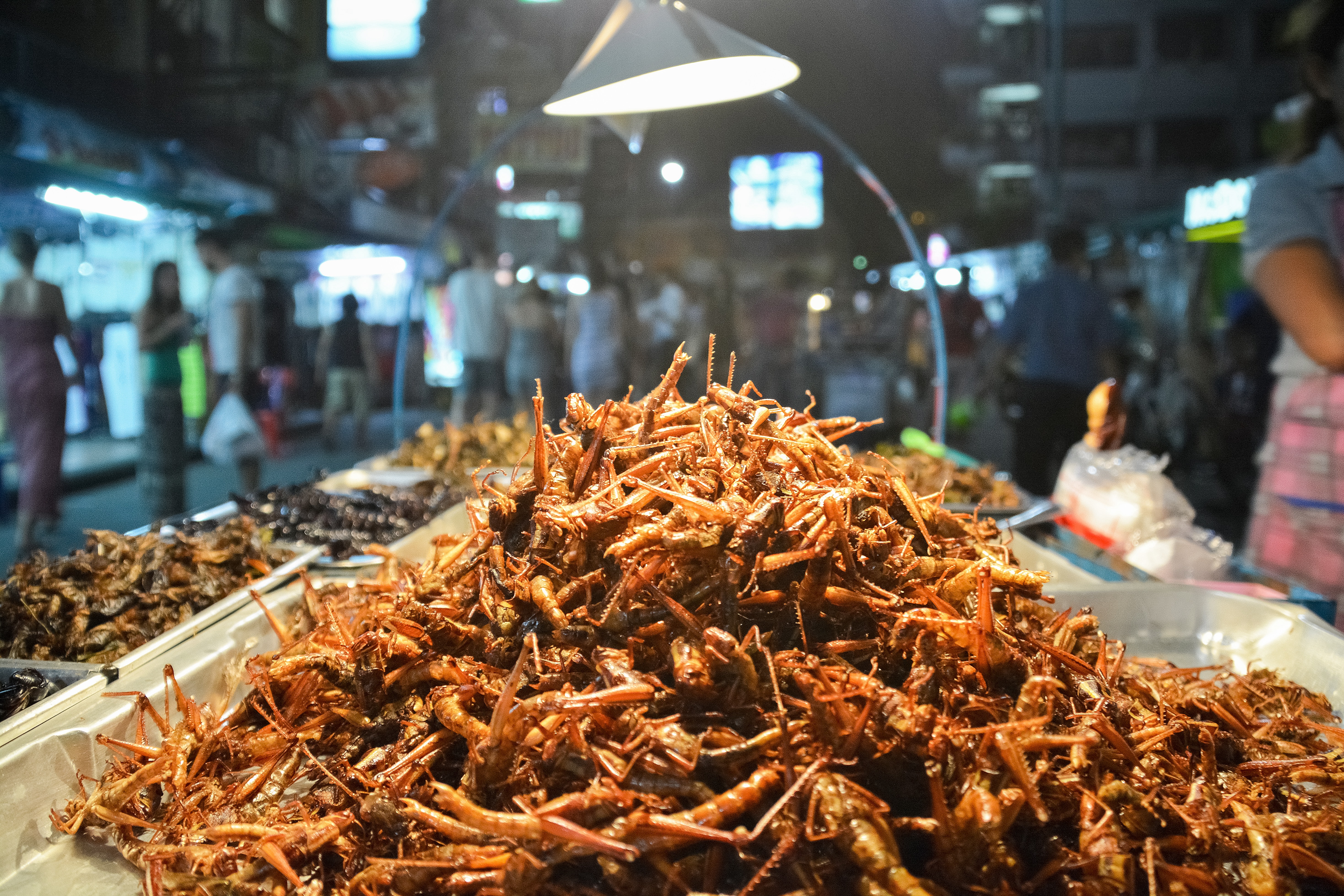
A sustainable alternative to climate-destroying food production.
Making a meal out of it: insects to address food insecurity
It’s a staple of culinary television shows: the host of the show travels far and wide and eventually ends up eating bugs. From Anthony Bourdain to Andrew Zimmern, we’ve seen grasshoppers, crickets, grubs, beetles and more eaten and enjoyed as strange and unusual food. Beyond taste experiences, let’s look at what edible insects can mean for people who face food insecurity and environmental degradation.
There are many arguments for introducing edible insects and fast. Since 2003, the Food and Agricultural Organization has been working on topics pertaining to edible insects in many countries worldwide. Rising costs of animal protein and issues related to food insecurity, plus climate change exacerbation mean that solutions of this nature should be fast-tracked. Our Accelerator Lab Network is acutely aware of the innovations in this space and has uncovered many examples of local entopreneurs ready to expand the insect market and the thinking around them as an important food source and a support for livelihoods.
The SDG multiplier effect: uncovering insects’ potential
The list of creepy crawly-based solutions goes beyond insects. Innovations that indicate the potential of worms, snails and sea urchins are starting to surface too. This trend highlights how these frugal innovations, very often off the radar of most international top-down organizations, have the potential to address multiple SDGs at once, from supporting food security and waste elimination to encouraging circular economies. The Lab teams are surfacing solutions that are hiding in plain sight, just like insects, which offer rich potential for SDG achievement.
Contributors:
Oksana Udovyk, Head of Experimentation, UNDP Ukraine Accelerator Lab
Dr. Lyubomyr Matsekh, Head of Consulting Practices at ELEKS
Simone Smit, Head of Exploration, UNDP South Africa Accelerator Lab
Yem Ahiatsi, Head of Solutions Mapping, UNDP Togo Accelerator Lab
Neo Matsoso, Head of Exploration, UNDP Lesotho Accelerator Lab
Muhammad Didi Hardiana, Head of Experimentation, UNDP Indonesia Accelerator Lab

 Locations
Locations